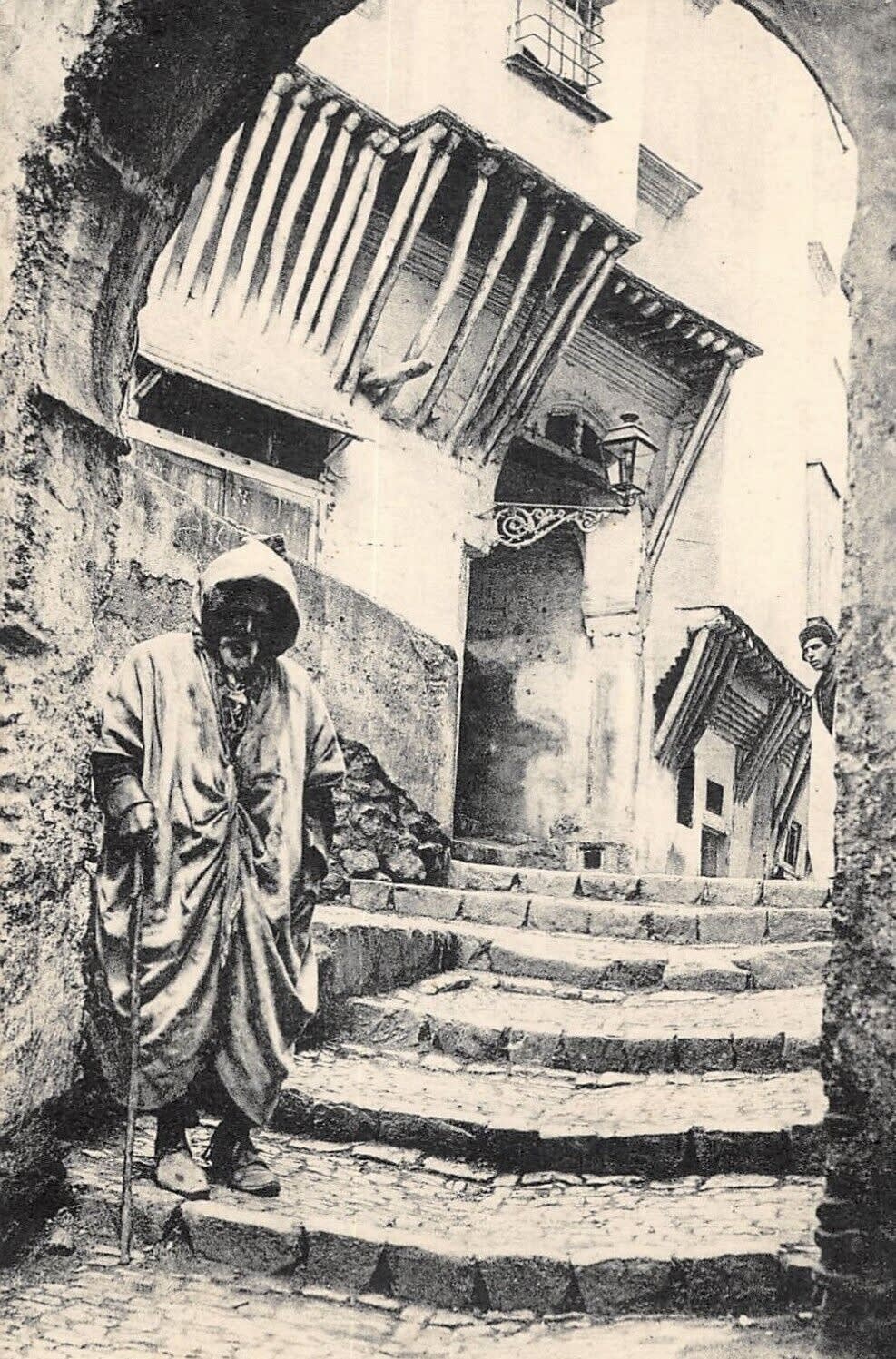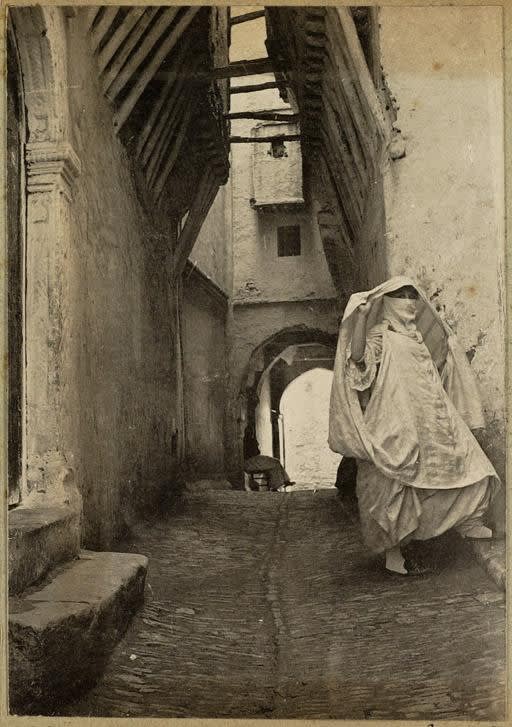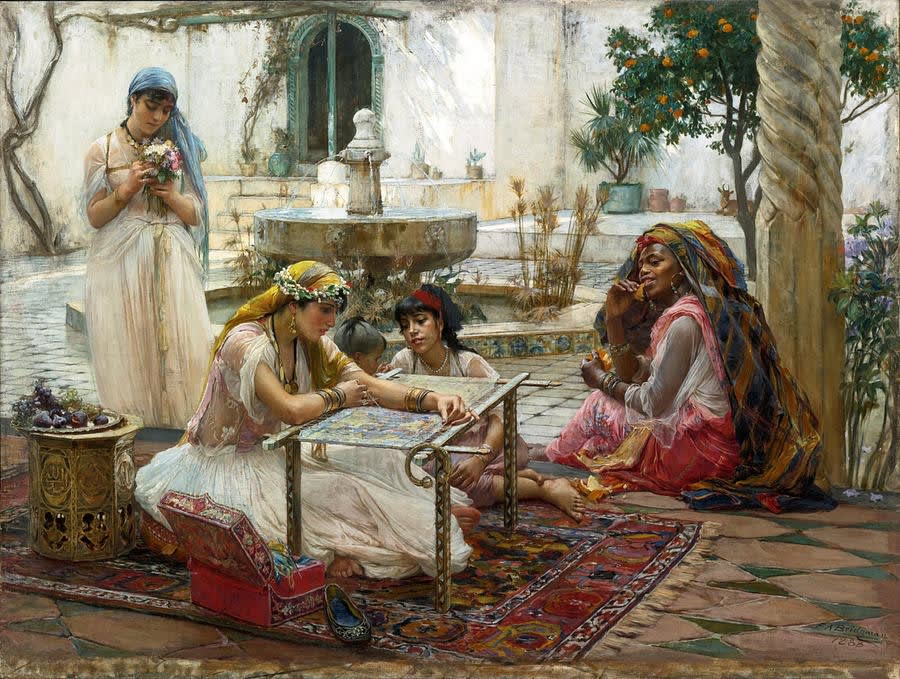Frederick Arthur Bridgman (1847 - 1928)
A street scene on Rue du Diable, Algiers
Signed, dated and located: FAB / Alger / 2 Mars 86
Oil on canvas
41.1 x 32.2 cm. (16 ¼ x 12 ½ in.)
Literature:
A street scene on Rue du Diable, Algiers
Signed, dated and located: FAB / Alger / 2 Mars 86
Oil on canvas
41.1 x 32.2 cm. (16 ¼ x 12 ½ in.)
Literature:
F.A. Bridgman, Winters in Algeria, Boston 1889, illustrated p. 49.
Painted in March 1886, Frederick Arthur Bridgman’s charming oil sketch animates a moment of street life from the Casbah of Algiers. In the foreground, a man seated against a wall plays a drum. A graceful woman in a diaphanous pink hayek glances at him as she descends cobbled steps. In the background, opposite a market stall, stand a couple of veiled figures set below the sun-baked, vertiginous white buildings of the Casbah. All of this is off-set by a sliver of blue Algerian sky.
The painting, which depicts the Rue du Diable, was illustrated in Bridgman’s 1890 travelogue Winters in Algeria. Rue du Diable, which followed a horseshoe course, was one of the jumble of streets forming the Casbah, the quarter clustered around the ancient citadel of Algiers. We know that Bridgman has painted the street as it really was: fascinatingly, a late 19th-century photograph (fig. 1) closely corresponds with the painting, with both viewing the street from almost exactly the same spot. This raises the interesting question of whether Bridgman worked on the picture back in his studio from a photograph, as was common for Orientalist painters, or whether he instead set up his easel in the street, sketching out this scene from life. The rapid, impressionistic technique, combined with the precise dating, might suggest the latter.
Either way, Bridgman’s painting allows the viewer to experience what the artist felt as he strolled around the city, soaking up the sights of Algiers. In this respect the painting has an important documentary role to play: here we see the city not through the exaggerated imaginings of a European artist but rather as it actually existed at the time. Other photographs of the Casbah streets from the late 19th century (fig. 2) show a similar cast of characters to those populating Bridgman’s painting. The artist’s attention to costume and accessory, as well as his interest in all aspects of daily life, provide a valuable record of Algerian culture from the late 19thcentury.

Fig. 1, Photograph from c. 1900 showing the Rue du Diable

Fig. 2, Photograph from c. 1900 showing veiled woman
on a Casbah street
Though indebted to Jean-Léon Gérôme, by the 1880s Bridgman’s work is characterised by a greater sense of naturalism, with an emphasis on vibrant colouring and a masterful use of light, as is the case here. With light brushwork and dabs of the palette knife, the American artist records the texture and shifting tones of the plastered walls and stone steps of Algiers, a city which Bridgman remembered as a ‘white dove settling on a hillside’.[1] Street scenes such as this amply demonstrate Bridgman’s first-hand knowledge of Algiers and compliment the intimate domestic scenes (fig. 3) for which he was also famous.

Fig. 3, Frederick Arthur Bridgman, Dans une ville de campagne, Alger, 1888, oil on canvas,
123 x 163, Private Collection
